The Captain discovers a cult classic that might just be the best-kept secret on the New South Wales coast – the Sea Devil.
Cult- A religious or social group with socially deviant beliefs and practices, known for small but dedicated fan base. Cults often acquire their status decades after inception. (Source: Adaptation from Captain-pedia)
It was The Captain’s toughest challenge yet: organising a photo shoot with an armada of Sea Devil boats and owners. The Captain’s crew asked around, tracked down numbers and started dialling. We invited owners to be part of the photo shoot to end all photo shoots. “We’ll have drones, telephoto lenses and TV cameras”, we wheedled. They were unmoved. “There’ll be free beer and freshly barbecued lamb chops on the beach”, we schmoozed. They still weren’t sold.
“Sounds alright, but there’s a mackerel comp on this weekend. Can’t make it, mate”, said one. “Oh, sorry, the visibility is too good, I’m off to the jew hole”, said another. But The Captain persisted, and with the help of Sea Devil Commander-in-Chief John Wiltshire from Northern Beaches Marine, finally assembled his legion of Devils.
DEVIL’S WORK
The sun peaked over the horizon at Bayview boat ramp, giving life to a perfect autumn morning on the Pittwater, spitting distance from the mouth of the Hawkesbury River. The Devils slipped into the water behind dual-cab 4x4s and well-worn utes. A gleaming white 6.2m model with soaring 20ft outriggers
and a bulging black 250HP outboard sat on the beach alongside a 5.2m ancestor with faded yellow paintwork from the late ’80s. Although far less shiny than its big brother, the wave-breaker and 130 E-Tec suggested this little Devil wouldn’t be overawed by the occasion. After quick introductions and firm handshakes we pushed through the low-lying fog to open water.
The boats went into precision formation, first running single-file then seamlessly sliding into a line formation like a rolling starting gate from the Melbourne Cup. These skippers could handle their rigs ‑ no surprise as some of them have been caressing the same helm for 25 years.
After completing the formations, we beached the boats and fired up the Coleman stove for a cuppa. While some owners headed off to shoot videos of their boat, others shared Sea Devil stories to camera ‑ enthralling tales of boating folklore; from rumours to the origins of the hull to off-set engine angles and high-speed beach landings at Long Reef, a notorious Northern Beaches ramp. The Captain’s crew boarded every boat and stuck their heads in hatches. Then they dropped the throttles, carving up Broken Bay in 23.5 degrees of 23mm glass hull.
FORM FOLLOWS FUNCTION
The Sea Devil brand was developed by waterski race boat champion Peter Williams in the early ’80s in Ulladulla, NSW. Rumour has it the hull is based on a Nova Craft. Peter designed and built the boats for commercial operators with thick fibreglass hulls, double skins, wave-breakers and big transoms for twin rigs.
The Devil’s most notable feature is the ballast system, or flooding keel, which fills with seawater at rest, then drains when the hull is on the plane. It effectively adds about 300kg of water to the hull weight at rest on the 620 model, and 200kg on the 520 model. Water flows into the hull, assisted by two air vents at the fore of the ballast system, exiting near the bow. The vents expel air as the water fills the cavity and assist water flow during the draining process. When the Devils reverse or stop, water exits the front vents, creating two horns of water.
“That’s how the name Sea Devil came about ‑ the devil horns. Cool, hey?” says proud owner David Wills.
The flooding keel is simple and incredibly effective, requiring no clumsy hatches or levers to operate. It creates usable weight at rest, but you don’t have to lug around the entire ocean or drag it behind a tow rig. The stability belies its 23.5 degree dead-rise. It’s certainly as stable, if not more so, than any other deep-vee boat in its size class. And it’s no surprise spearfisherman and abalone divers choose them. The only downside, as we discovered, is if you beach them they’re a bugger to shift!
The hull features seven layers of mat with extra layers on the keel section, taking the thickness to 23mm. That comes in handy for the tricky Long Reef beach landing, which involves removing the key to the hydraulic ram and hitting the beach at speed. Ol’ Yella, the older 510 model (now 520) in our shootout, even had a stainless keel plate fitted to prevent excessive rubbing from beach landings. There are three layers of 15mm ply in the transom with two layers of glass in between and another two inside the transom.
The ride on the 520 is aggressive, demanding full attention, but exhilarating, like your first ride on a minibike fitted with a new “power-band” (The Captain, older and wiser, now knows this to be bullshit, but it didn’t stop kids at school claiming their bike had just been fitted with one and that The Captain should try it). The 620 is predictable, smooth and soft – as you’d expect. Surprisingly, it felt more like a surefooted 6m Edencraft than an on-the-limit Cootacraft, despite the aggressive dead-rise.
THE BIG V: DEAD-RISE AT TRANSOM
Formula 233 (Haines, Edencraft) 24
Cootacraft Coldfront 24
Sea Devil 23.5
Whittley Sea Legend 23
Edencraft 6m Offshore 22
Haines Hunter V19 22
DEEP & MEANINGFUL
The Sea Devil has other notable features including impressive internal freeboard. It’s deeper than a 6m Edencraft or Bass Strait 6m Offshore, but not quiet as a deep as a Cootacraft Coldfront at the transom. You feel like you’re part of the boat, with the floor below the waterline. The dash is a little short, with no lip on the inside like its counterparts. Storage compartments can be fitted at the owner’s discretion, accommodating extra-long and wide pockets for spears guns, fins and goggles. The mid-mounted icebox on the 620 looks obtrusive, but each owner swears that now they own one they’ll never look back.
RAISING THE DEVIL
Three years ago, John Wiltshire from Northern Beaches Marine started living the dream when he bought the Sea Devil name and moulds. His hands-on experience servicing and fitting out Devils gave him intimate knowledge of the boats ‑ and their owners. He feels a sense of pride being part of Australian boatbuilding history, but he isn’t basking in the glory ‑ he’s already made a number of choice changes to the Devil configuration and is looking to develop the range, starting with a 520 console, which The Captain intends to “test” exhaustively 85km offshore during yellowfin season.
DEVIL YOU KNOW
The 520 is the pocket rocket, with 23.5 degree dead-rise and 2.2m beam. The 25-inch transom can take a 140HP Suzuki four-stroke, sitting behind a 130-litre fuel tank. The beauty of the 520 is it offers huge cockpit space for its size, accommodating up to four anglers or divers comfortably (maximum: five). About 80 per cent of 520s that go out the door are customised with extended or widened side pockets for spearguns, built-in eskies, long-range tanks, live wells and tuna tubes. Spearos tend to go for the four-blade prop for hole-shot performance (put to good use during spearfishing competitions). The hull weighs 650kg and 1100kg as a BMT package. Starting price is $52k, but most boats end up in the high $50ks with all the options.
The 620 is a scaled-up version of 520, designed by a naval architect. It shares the same dead-rise, but with fuel capacity up to 280 litres. It offers a huge, flat fishing or diving platform with the option of a built-in icebox amidships, vee berth, stainless targa and front side clears. John says fuel-conscious owners go with the 200HP four-cylinder model, but more often they’re wearing a big V6 250HP Suzuki. John fits Simrad12- and 9-inch NSS Evo2 electronics. The latest factory-fresh Devil had a 1KW though-hull transducer with a BSM3 transducer module.
“We had the boat running at close to 40 knots reading full bottom ‑ and readings from more than 600m depth at the shelf”, John says. Hull weight on the 620 is x and BMT weight is 1820kg. Price starts from $75,000, but usually end up around $120,000.
WHAT WE LIKED
- No-fuss owners
- Understated, yet imposing looks
- Original gel coat on old boats
- Tough-as-fug build
- Driving the 520 – hold on!
- Low floor and internal freeboard on the 620
- The ballast system – a brilliant and simple feature
- Mid-mounted icebox on the 620
- Customised storage options
- Likes to be driven hard ‑ the way we roll!
NOT SO MUCH
- Likes to be driven hard ‑ it’s not for the snoozy
- Low-speed maneuverability on the 520
- 520 draws a lot of water for a ‘smallish’ boat
- Try getting it off the beach at low tide!
- Access to anchor system
- Dive door would be a welcome addition
- 520 gunnel tops a tad narrow
- Not the roomiest dash
- No inside lip on dash
- No walk-around / standing on 520
______________________________________________________________________________________________________________________
DEVIL’S ADVOCATES
Owner: Vince Andreacchio
Occupation: Construction foreman
Boat: 2015 620 Sea Devil
Engine: Suzuki DF250AP
Why a Devil: I had a 17ft Sea Devil, a Haines 445F and a Cootacraft Little Ram prior to this boat. I’ve always liked solid, fast boats with a proven ride and handling. The first time I stepped onto a mate’s 620 Sea Devil I wanted one. The rest is history.
Favourite devilish things: It’s fast, safe, dry and comfortable. I love the mid-mounted icebox, too. Some people wonder why take up all that deck space with an esky. I say, “When was the last time you fished from the middle of your deck?”
Custom bits: Extended rear deck for larger bait tank and battery housing and 20ft Precision outriggers on Reelax bases. The stainless canopy was also a custom option and I’ve fitted Lenco trim tabs, mainly for coming home from the shelf in big easterly swells.
Engine feedback: It’s quiet and smooth with a more predictable acceleration curve than the old 200HP E-Tec. The E-Tec was fun, though.
Hunting for: Marlin out wide, snapper from the inshore reefs, harbour kings ‑ and the occasional cruise or picnic with my wife.
Sure Vince, we all say that. Favourite boat here (not yours): Tony’s old 620 with 30-inch leg. That leg can’t be a bad thing (Captain’s Note: the extra length is to keep the power head well above the waterline and avoid ingesting water ‑ a common problem with the old stern-heavy boats powered by twin engines). I also love the 17-footers (520); there’s a lot of deck space for a small boat.
Sea Devil owners: We’re all hoons, but proud boat owners and super-keen on our fishing and diving.
______________________________________________________________________________________________________________________
Owner: Mark Casazza
Occupation: Architectural designer / builder
Boat: Old 510 Sea Devil, now known as a 520
Engine: Evinrude 130
Why a Devil: I tried several alloy boats and gave up on them ‑ they wouldn’t stop breaching in a following sea and I got seasick because of the rocking motion. This one is an old girl, I’ve had her for 25 years and she was three years old when I got her. She’s an ex-professional fishing boat, built to survey with another inner skin that’s foam-filled.
Favourite devilish things: The power, weight, hull thickness and ballast system. Oh, and you can’t beat the ride. It also has a live-bait tank three times the size of the average!
Engine room: I ran her with twin 50HP Evinrude motors for 20 years. She was a bit of a handful to control, but having the ability to trim the engines up and down in an easterly or southerly swell was handy. Now I’ve got a single 130 E-Tec, the power-to-weight ratio is way superior.
Work done on the hull: When I put the 130 engine on, I re-glassed the internal corners and brought the engine bolts all the way through to the engine well. It was also fitted with a stainless strip on the keel for Long Reef beach landings. In the early days, I believe they used bronze rubbing strips!
Hunting for: Snapper and kingfish from Long Reef and Sydney Harbour. The best is an 8kg job from Long Reef. I fitted ’riggers for the odd mission to Brown’s Mountain.
Sea Devil owners: Very passionate. Once they buy one they never look back. Many own several at a time.
______________________________________________________________________________________________________________________
Owner: Andrew Kyle
Occupation: IT systems engineer
Boat: 2015 model 520 Sea Devil
Engine: Suzuki DF140A
Why a 520 Devil: I wanted a new boat big enough to take offshore, but small enough to handle myself. It had to have a deep vee that rides well. I also wanted something I could customise from the start. It had to be local as I’m pretty particular about what I want ‑ the Sea Devil showroom is five minutes from my front door!
How the Devil compares to other boats you’ve owned: I came from a Haines 17R and the Devil has more room inside, a built-in bait tank and is better laid-out. It feels heavier, with a deeper vee, and the flooding keel gives more stability.
Custom bits for spearing: Extended side pockets, slightly widened to hold long spearguns, and a second smaller pocket for holding masks and safety gear. The seats also had to be removable for spearing trips.
Tell us about the Suzi: It’s very economical and quiet. Out of the hole, with two-up, it goes really well. It’s a bit slower with four divers, so I changed to a four-blade stainless prop and the hole shot is a lot better with no loss at the top end.
Hunting for: I’m usually with my 11-year-old son, spearfishing on the east coast, with occasional line fishing.
Favourite boat here (not yours): I like the 620s, but I need a size I can handle myself. Maybe when my son is older I’ll consider a 620.
Dream destination: We’re planning to head to North-West Island, putting the boat on the barge and spearing and camping for the week.
______________________________________________________________________________________________________________________
Owner: Tony Byrne
Occupation: Workshop manager
Boat: 2001 model 21 Sea Devil, now known as a 620
Engine: DF250 Suzuki with XXL leg
Why a Devil: I haven’t found a better all-round fishing and diving trailerboat – and I’ve been looking hard. I’ve got another smaller 17ft MK1 model at home. It’s still in the original British racing green colour.
What’s special about this 21ft rig: It’s one of the last ones built by Peter Williams. It’s foam-filled with a 30-inch reinforced transom, one of the few they did to accommodate the extra-extra-long leg (its purpose is to keep the power head well above sea level). The motor is also offset, so when we get airborne it lands evenly. That’s a little trick Peter shared.
Origins of the hull: Many of the original hulls were built into survey for the professional diving industry, especially abalone and sea urchin divers.
How has she held up: I haven’t had to do any structural repairs on this boat for 16 years, which is a rare thing! It’s still got the original windscreen despite numerous bar crossings.
What you love most: The ride and the hull lay-up. In the ballast area the hull is about 25mm thick. I cannot get a transducer to work through that hull! The ballast is awesome when motoring around in the slop, picking up divers. The high sides are great, too. It doesn’t seem to rock around as much as other deep-vee hulls. And it’s always nice to slip the toes under the side pockets.
Captain’s note: This one’s for sale
Tony is selling his one-owner 21 Sea Devil for mid-$50K, with a new fully customised trailer and 250HP V6 Suzuki (400 hours). Call him on 0410511861 if you want to join the Sea Devil cult.
______________________________________________________________________________________________________________________
Owner: David Wills
Occupation: Corporate refugee / window cleaner
Boat: 1996 model 21 Sea Devil, now known as a 620
Engine: DF200AP Suzuki
Looks fresh, Dave. What’s she had done since ’96: Last year she got a new gel coat, new rear seats for day cruising, live bait tanks, kill tank, and the fuel tank moved forward. And she’s just been wrapped in a Kevlar-look vinyl.
New Suzi: The new lightweight in-line four-cylinder DF200 is quiet and sits nicely on this hull. It’s far more efficient than the old Yammie two-stroke – and based on comparative testing I’ve done, about 20 per cent more efficient than the new V6 4lL 250AP Suzuki. And $5K cheaper, so no horsepower envy. It really is a beautiful engine.
Best features: Definitely the comfort levels after a day on the water. The ballast system helps the boat sit low at rest – complemented by a low floor and high internal freeboard. It’s also very safe.
Sea Devil owners: We get ourselves into some pretty gnarly situations ‑ every owner has a tale to tell. I lost my first Devil to the sea after some misfortune, but that’s a story for another day.
Devil history: Peter Williams wanted to build something with the legendary ride characteristics of the Haines 17s. He saw the ballast idea in South Africa and built it into the Devil. He once told me, “I know where to put the glass without making the boat too heavy”. It’s the key to the great ride.
The legend: Their nickname is “Phantom” because many were dark grey and used by NSW professionals who drifted south of the border for the “green gold”.

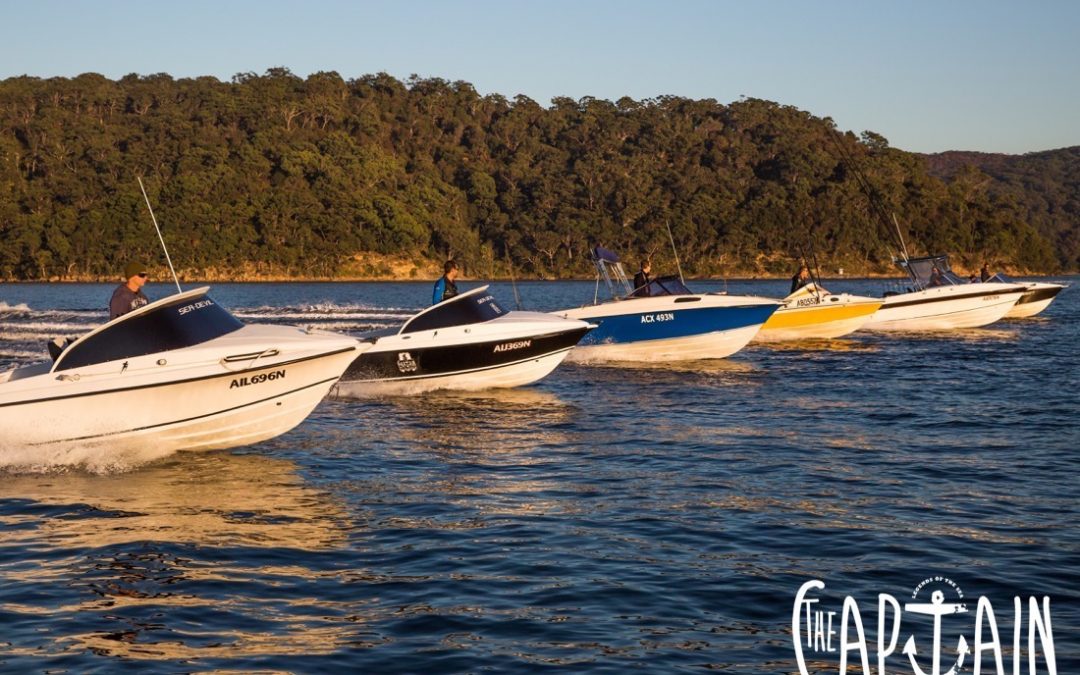







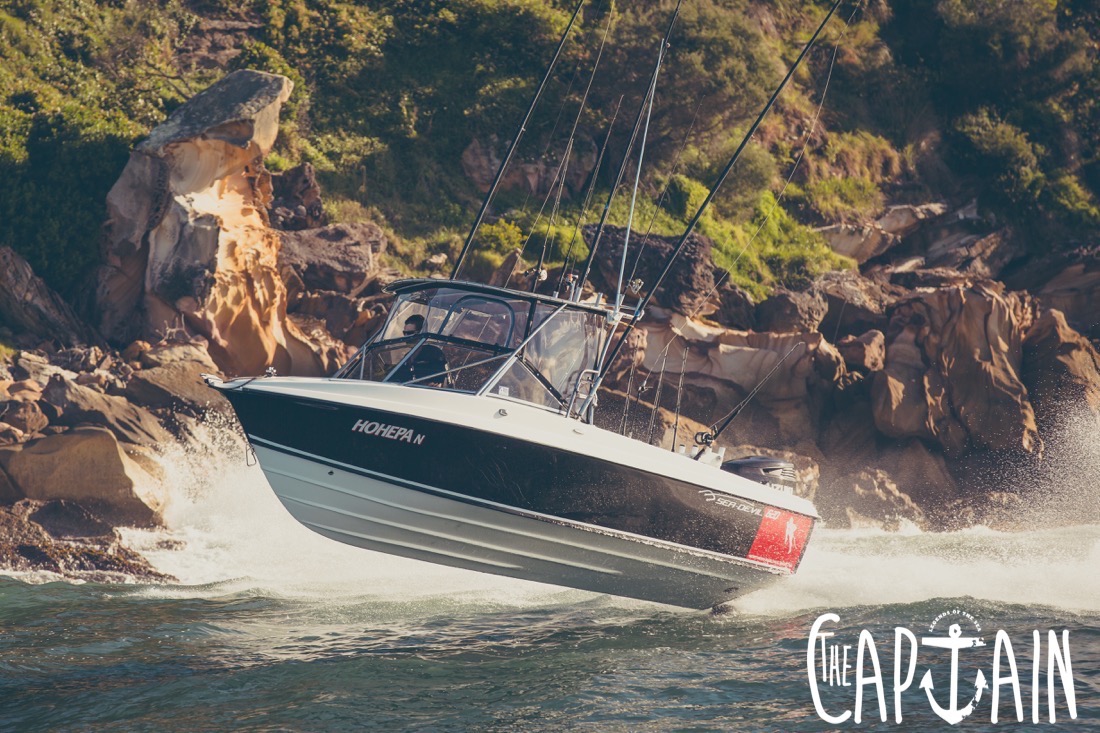
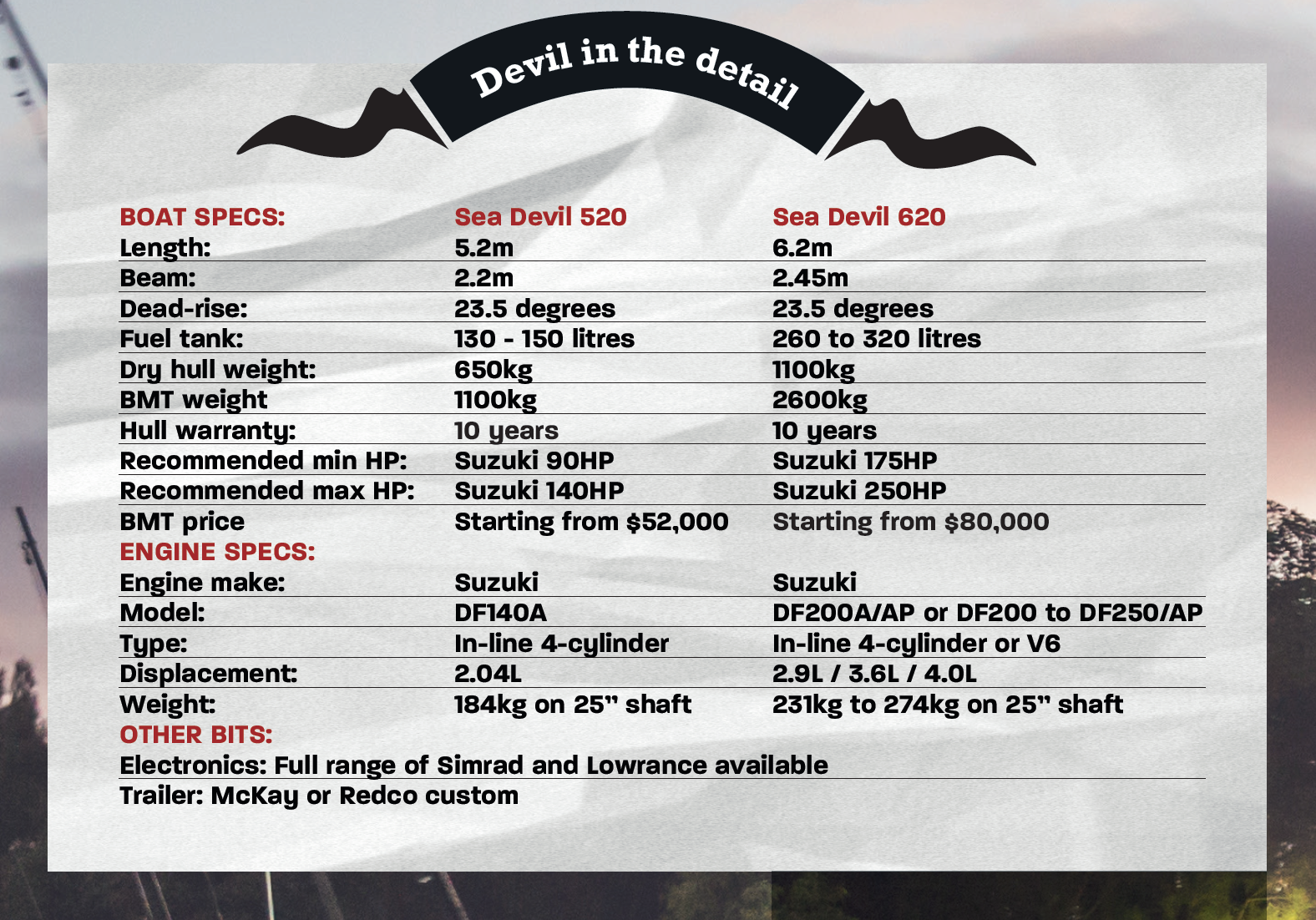
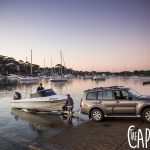
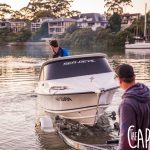
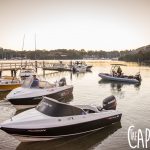
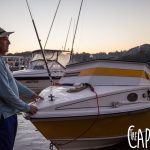
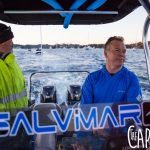
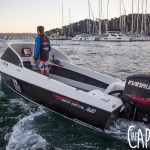
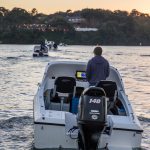
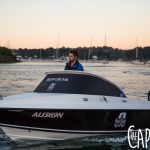
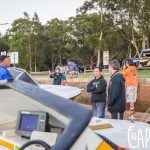
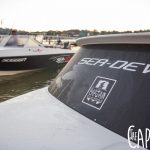
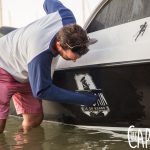

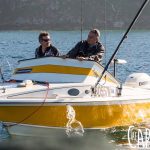
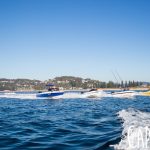
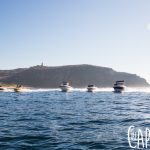
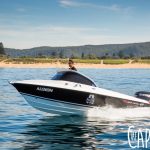

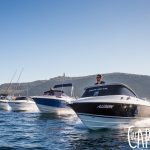
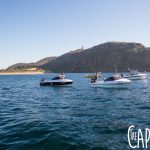
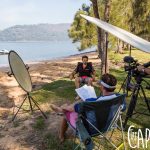
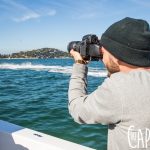
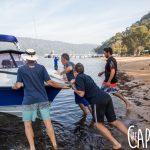
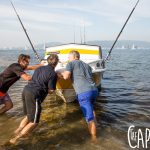
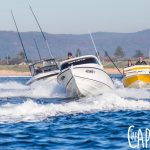
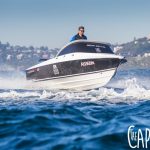
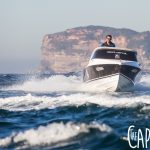
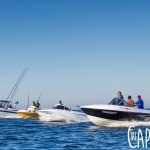
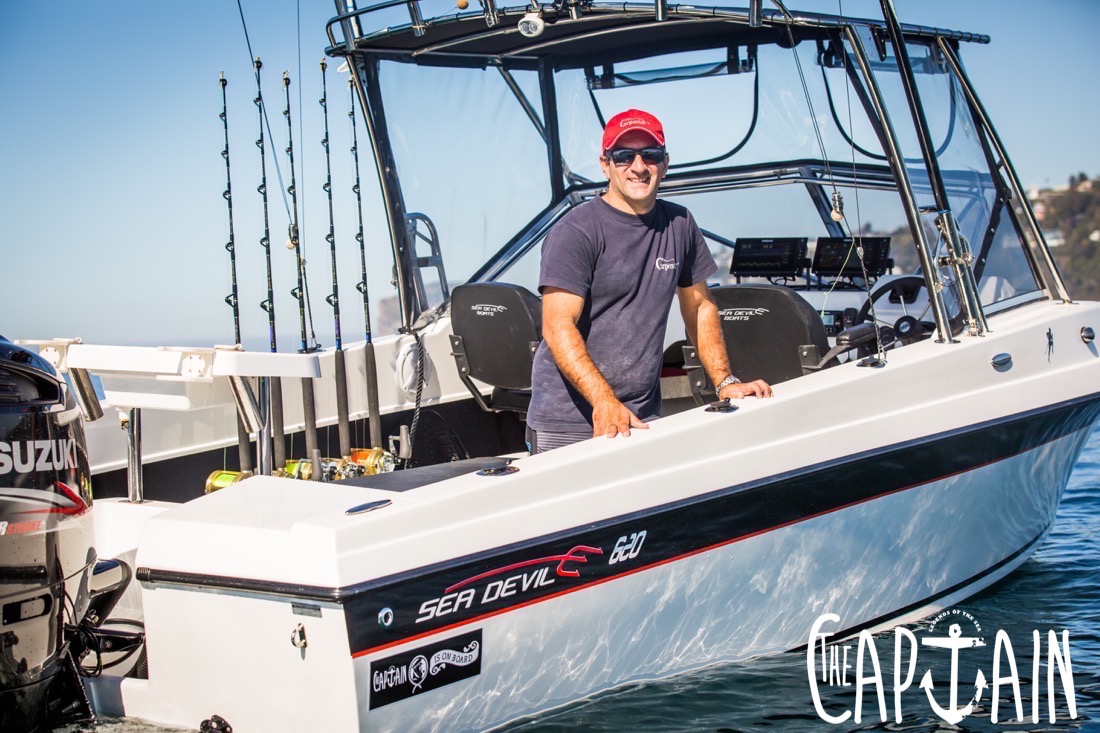
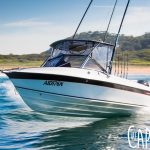
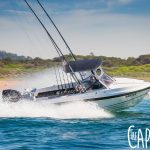
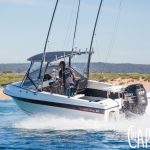
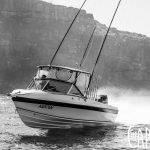
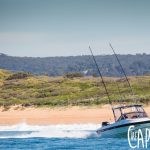
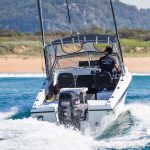
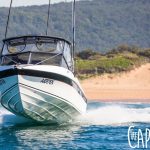
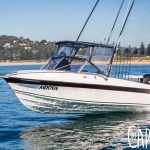
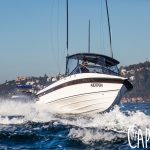
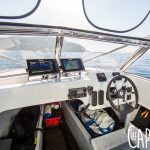
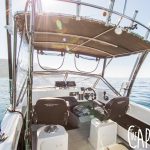
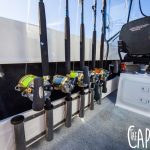
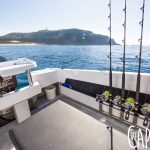

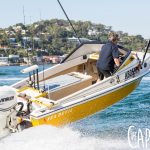
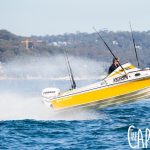
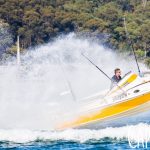
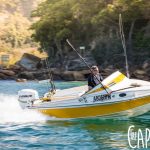
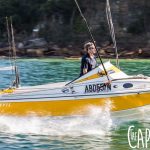
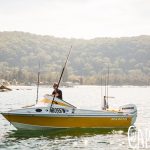
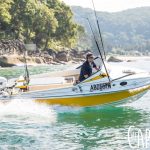
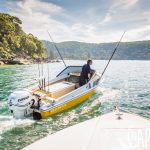
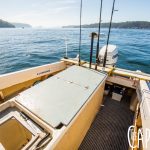
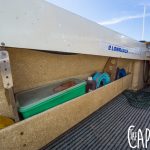
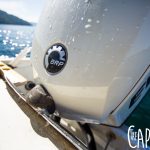
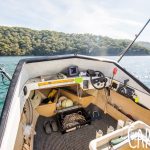

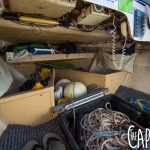

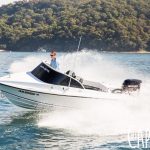
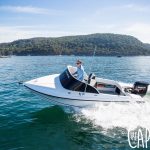
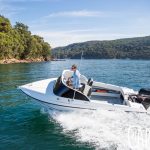
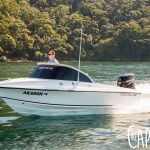
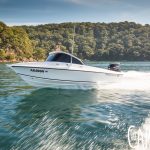
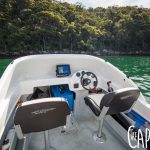
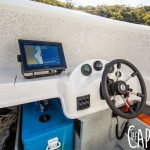
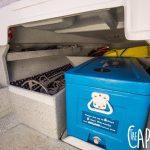
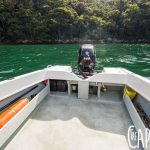
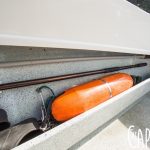
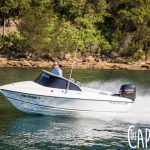
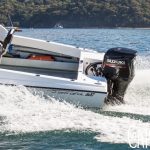
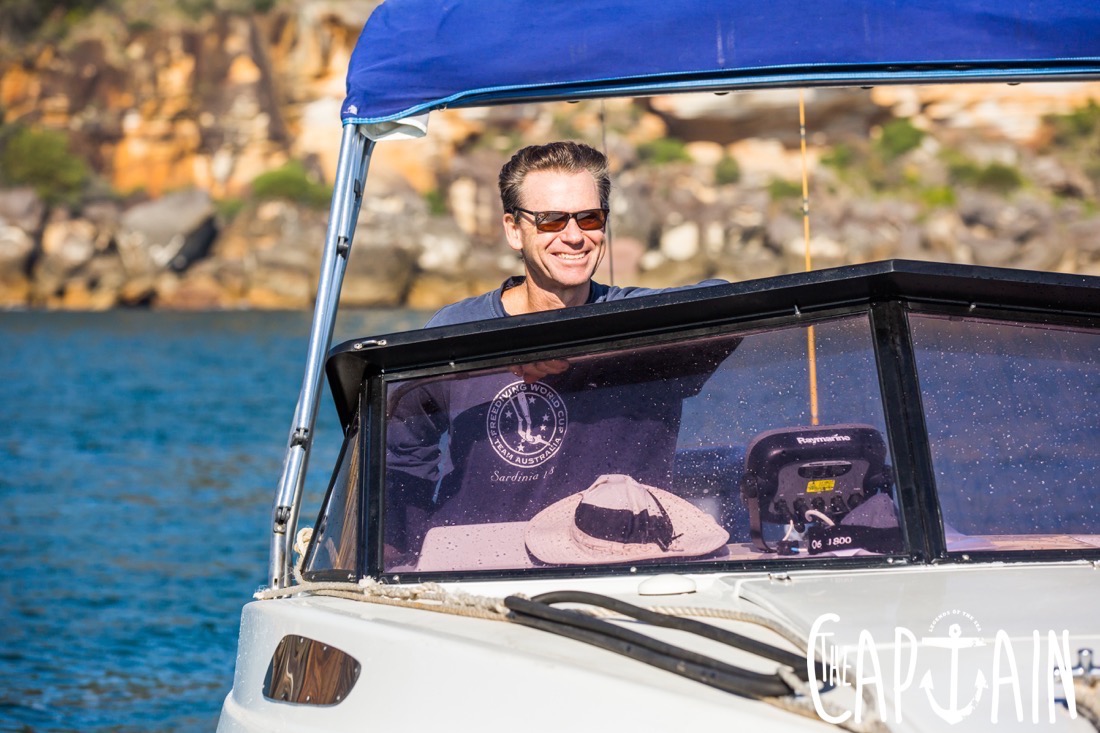
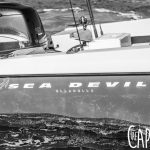
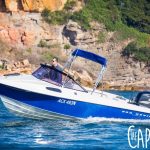
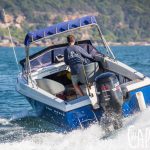
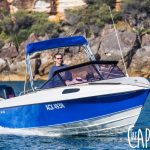
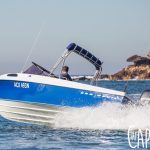
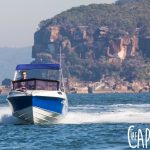
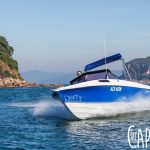
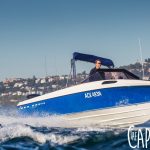
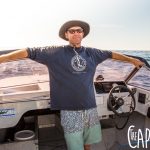
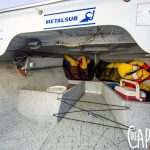
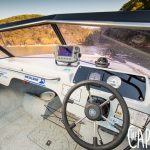
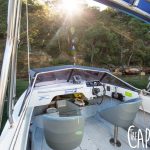
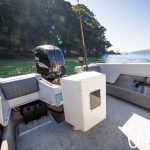
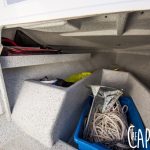
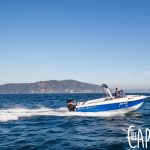
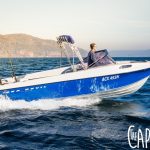

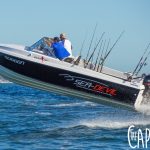
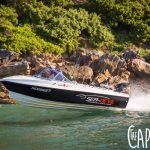
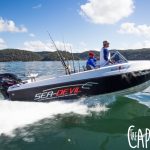
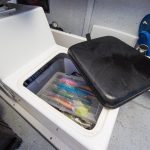
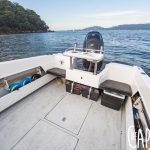
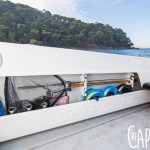
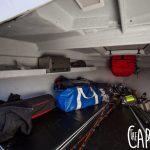
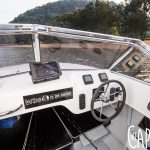
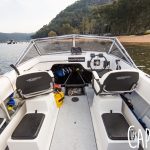
Recent Comments